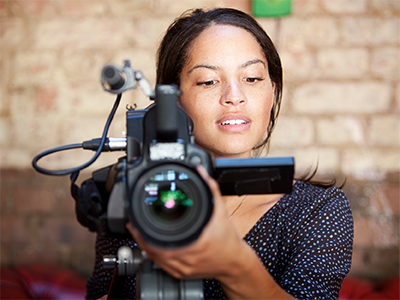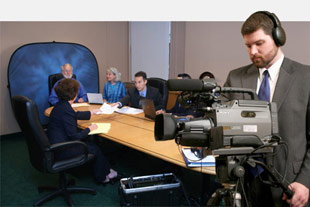How Legal Videography Assists in Preserving Vital Evidence for Litigation
Wiki Article
Why Legal Videography Is Critical for Accurate Court Recordings
The role of lawful videography in court room setups can not be overemphasized, as it works as a vital device for maintaining the integrity of court records. By recording both verbal and non-verbal communication, it boosts the clarity of witness testimonies and reflects the subtleties of court room interactions. This thorough documents not only help in lowering potential misunderstandings however additionally sustains appellate reviews, consequently reinforcing the judicial procedure. Nevertheless, the effects of integrating legal videography into common court practices increase essential inquiries about its more comprehensive effect on the lawful system. What might these effects involve?Relevance of Visual Evidence
In the world of legal procedures, the relevance of visual evidence can not be overstated. Aesthetic proof serves as a powerful device in establishing realities, proving testaments, and improving the general clearness of an instance. This kind of evidence, that includes photographs, video clips, and representations, can supply a tangible context that verbal summaries commonly do not have, consequently using juries and judges a more clear understanding of the situations bordering a case.In addition, visual evidence help in the retention of information. Human cognition is inherently visual, and people are most likely to bear in mind and understand details presented in an aesthetic layout. In the courtroom, this can be essential, as compelling visual proof can guide opinions and enhance the narrative offered by legal agents.
Furthermore, using aesthetic evidence can minimize misunderstandings and ambiguities that typically occur from verbal exchanges. By giving a straight representation of occasions, aesthetic proof aids to remove subjective interpretations and fosters an extra objective examination of the facts. The integration of visual evidence into lawful process not just enhances the honesty of the judicial process yet likewise boosts the likelihood of achieving a simply outcome.
Catching Non-Verbal Cues
Making use of sophisticated videography methods can dramatically improve the capture of non-verbal cues during legal process. Non-verbal interaction, including faces, body language, and eye call, plays an essential function in sharing emotions and purposes that may not be explicitly mentioned in verbal statement. legal videography. Legal videography utilizes high-def electronic cameras and strategic angles to make sure that these refined signs are tape-recorded with clarity and precisionThe ability to evaluate non-verbal habits can give beneficial context to declarations made throughout court sessions. A witness's hesitation or confidence can be analyzed through their position or motions, potentially affecting the court's perception of credibility. The usage of close-up shots can aid focus on a speaker's expressions, enabling for a more nuanced understanding of the testament.
Moreover, integrating multiple camera angles can produce a comprehensive view of interactions, highlighting dynamics in between events involved. This complex approach not just enhances the accuracy of the court document however also aids in protecting the stability of the judicial procedure - legal videography. Ultimately, capturing non-verbal hints through legal videography cultivates a richer, extra total representation of courtroom proceedings

Enhancing Testimony Reliability
The dependability of testament can be considerably strengthened with using high-grade legal videography. Video recordings act as an unbiased medium that records not only the spoken words of witnesses however also the subtleties of their distribution, consisting of tone, pacing, and emotional expressiveness. This multifaceted documents supplies a more clear understanding of the witness's reliability and purposes, which can be pivotal in lawful procedures.Furthermore, legal videography decreases the capacity for misconceptions that may arise from composed records alone. When jurors can observe a witness's disposition and body language in conjunction with their statement, they are better furnished to evaluate the authenticity and reliability of the evidence presented. This aesthetic context can enhance the testimonial narrative, making it more engaging and reliable.
Furthermore, the presence of a video clip recording can hinder possible inconsistencies in testament. Witnesses may be extra cautious in their declarations when they know they are being recorded, bring about more precise and honest accounts. Overall, high-quality legal videography boosts the honesty of statement, guaranteeing that the court has accessibility to a full and honest depiction of the facts as shared by the witnesses.
Supporting Appeals and Reviews
Lawful videography plays an essential role in sustaining charms and reviews by providing a comprehensive aesthetic record of courtroom procedures. This aesthetic paperwork catches not only the talked words of witnesses and attorneys yet likewise the nuances of body language, tone of voice, and courtroom dynamics. Such elements can be critical in read what he said understanding the context of testaments and disagreements presented.In the appellate procedure, where the focus is on errors of regulation and procedural justness, a video document can function as a vital device for appellate courts. It enables judges to assess the original test context, making sure that decisions are based upon a total understanding of the procedures. The capacity to aesthetically evaluate the temperament of witnesses or the communications in between parties can reveal understandings that created records might overlook.

Furthermore, legal videography can assist in making clear uncertainties in testaments or procedural rulings, thereby strengthening the basis for a charm. By offering a trusted, objective account of what taken place in court, lawful videography not only supports the honesty of the lawful process however also empowers all celebrations included to make educated decisions regarding their cases.
Streamlining Court Processes
Enhancing court room performance, legal videography improves procedures by providing prompt access to visual records of proceedings. This innovation enables courts, attorneys, and courts to review important testimony and proof, making certain that all celebrations have a clear understanding of the case. By recording the nuances of spoken and non-verbal communication, videography enhances the record, making it simpler to understand the context and weight of testaments.
Furthermore, video recordings can promote remote engagement in hearings, enabling for greater flexibility in scheduling and engagement, which is especially beneficial in complex cases including several stakeholders.
Conclusion
Finally, why not look here lawful videography plays an essential role in making certain precise court recordings by supplying vital aesthetic evidence that records both verbal and non-verbal communication. This technique improves the integrity of statements, supports appellate evaluations, and improves court procedures. By fostering a detailed understanding of court room characteristics, legal videography inevitably adds to much more fair judicial end results, enhancing the honesty of the legal system and facilitating informed decision-making.Report this wiki page